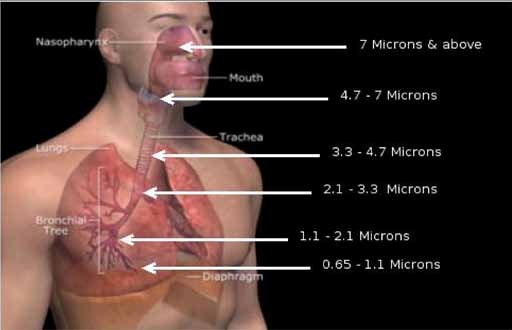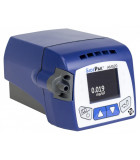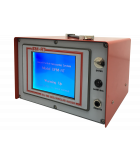The Products
Emissions of fine particulate matter (PM and ultrafines) in diesel exhaust have been of growing community, industry and government concern. Their combination of extremely small size and chemical composition increases the likelihood that particles will carry irritants and toxic compounds into the deepest and most sensitive areas of the lungs.
This can lead to severe bronchial problems and increased susceptibility to respiratory infection, such as pneumonia, bronchitis, and asthma. Carbon soot particles from diesel engines adsorb onto their surfaces other metals and toxic substances produced by diesel engines such as cancer-causing aldehydes (like formaldehyde) and polycyclic aromatic hydrocarbons (PAH). Occupational health studies link cancers, particularly lung cancer to diesel exhaust exposures. Traffic studies suggest increased rates of respiratory and cardiovascular disease and risk of premature death near busy urban streets or highways and thus must be addressed by industry and government. This also places at high risk the health of the underground mine worker.


Until recently, practical, low cost equipment was not available to reliably monitor PM emissions other than the opacity meter. However, research has shown that there is not always a good correlation between visible smoke and emissions of fine particles, which are generally so small as to be invisible to the human eye.
Recognising the need for a simple, rugged instrument to fulfill this need, manufacturers are now developing portable devices that allow real time readings to be produced. Real time monitoring equipment essentially falls into 2 categories now; Total Airbody - where the DPM levels of the surrounding atmosphere are measured, and Raw Exhaust - where a sample is taken directly from the exhaust of the diesel plant.
Total airbody analysis can give indications of positional exposures, allowing for rapid decision making as to the level of risk a worker is getting exposed to. Raw exhaust samples give a clear indication as to the performance of diesel fleet and their relative contributions to DPM in the atmosphere they are working in, allowing for the necessary controls to be put in place regarding fleet maintenance or movement within the area.
DPM Resources
- AIOH Position Paper 2013 - Diesel Particulate Matter and Occupational Health Issues
- Diesel Particulate Report 2006
- DPM 2012 - Sara Fernandez
- MDG-29 Guideline for the management of diesel engline pollutants in underground environments
- Real Time DPM Measurement as a Maintenance Tool
- W.H.O. DPM Press Release
- Western Australian Diesel Emissions Guideline 2013
Diesel Exhaust Emissions - Where are we? by Dr. Brian Davies AM

Another great presentation about DPM that gives real insight into the hazard and some potential solutions to managing it; a great/informative presentation by Dr Brian Davies


